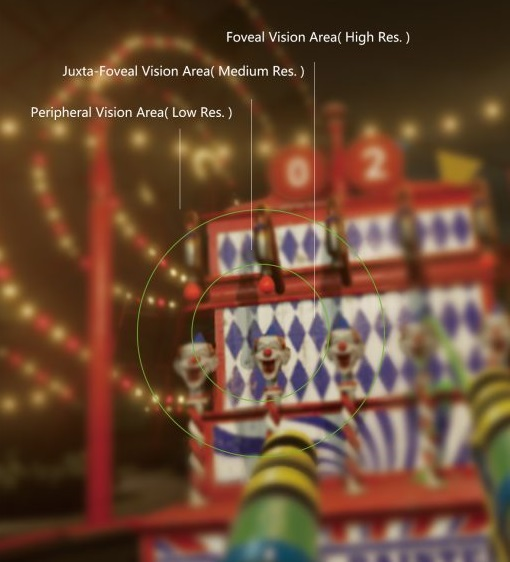Foveated Rendering Is the New Buzz Term
My first experience with eye-tracking virtual reality (VR) headsets was at CES 2017, when I tried the Fove 0 headset. Fove is a Japanese start-up that raised almost half a million dollars through a Kickstarter campaign in 2015. I was initially sceptical about the company’s claims, but after testing the device, I was impressed by its ability to precisely and immediately pinpoint where I was looking. Since then, I’ve tried numerous other products that I found equally exciting.
Most intriguingly, eye-tracking technology allows developers to employ a technique called foveated rendering, which can reduce the strain on a VR system’s graphics processor by using a lower resolution for parts of a scene that the viewer isn’t looking at directly. It can also make online streaming more efficient. Beyond gaming, eye-tracking systems have broader applications, such as studying consumer shopping habits.
|
|
|
Demonstration of foveated rendering by 7invensu |
Over the past year, interest and investment in this area has grown substantially:
- Google acquired Eyefluence.
- HTC-backed 7invensu developed aGlass module for the HTC Vive headset.
- Apple acquired a German company, SMI, specialising in eye-tracking technology.
- Oculus VR acquired The Eye Tribe.
- Tobii, a Swedish company with a strong heritage in eye-tracking sensors has started exploring opportunities in consumer VR.
- Qualcomm’s latest stand-alone VR headset reference design, the Snapdragon VR835, uses SMI’s eye-tracking capability, suggesting that the feature could be integrated in upcoming stand-alone Daydream VR headsets.
- Numerous other smaller companies such as Fove are also developing their own solutions.
Foveated rendering is becoming widely adopted by software and hardware makers, but its success relies on multiple factors including a more unified approach to VR development platforms. I believe the level of fragmentation in the VR segment is currently its biggest challenge.
However, efforts are being made to overcome this obstacle, mainly led by the Khronos Group’s OpenXR initiative, which aims to create a standard set of APIs, enabling developers to write code only once to address a wide range of platforms and devices. Google, HTC, Oculus, Tobii, Valve and other members of the consortium are working hard to ensure that standardisation of eye-tracking features is also addressed by OpenXR.
Makers of chipsets and graphics cards along with game engine companies will then have to make appropriate changes and additions to take full advantage of this type of graphical rendering. Finally, and perhaps most importantly, success will rest on content creators using this framework for the development of VR content and experiences.
Although it will take time for all these pieces to come together, I remain positive about the future, given the clear benefits of foveated rendering technology and growing commitment from leading VR companies. I expect to see further acquisitions and investment in the area of eye-tracking in the coming months, culminating in all major VR headsets offering some type of integrated eye-tracking capability by the end of 2018.

 Twitter
Twitter
 Facebook
Facebook
 LinkedIn
LinkedIn
 Email
Email